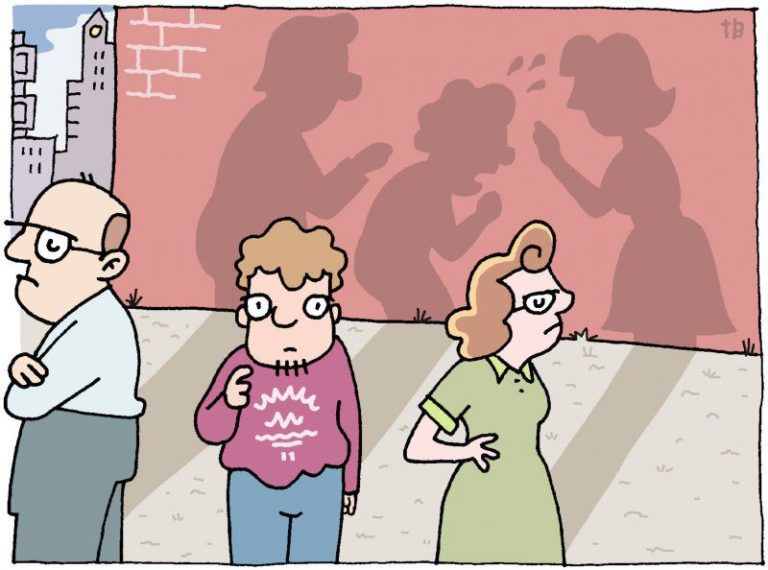Error 404: No efficient Communication has been found
How many times did you wish communication with others would be easier? How many times did you feel like your message got misunderstood or “lost in the translation”? How many times have you been “listening” to someone without really paying attention?
Let’s move all these questions in a family or couple context. Close your eyes and recall any conflict incident you have experienced in the last year that really crossed your limits. Make it vivid and clear in your mind and then check for the following factors:
1. Observations:
What I observe (see, hear, smell, taste, touch, free of my evaluations) that does or does not contribute to my well-being
Example: I see dirty dishes in the sink…
- What you observe (see, hear, smell, taste, touch, free of my evaluations) that does or does not contribute to your co-speakers well-being
Example: You see a bit of a messy but perfectly livable kitchen…
2. Feelings:
How I feel (emotion or sensation rather than thought) in relation to what I observe
Example: When I see dirty dishes in the sink I feel frustrated…
- How you think your co-speaker feel (emotion or sensation rather than thought) in relation to what your co-speaker observe
Example: When you see dirty dishes in the sink you feel fine…
3. Needs:
What I need or value (rather than a preference, or a specific action) that causes my feelings
Example: When I see dirty dishes in the sink I feel frustrated because I need to be heard when asking for something
- What you think co-speaker need or value (rather than a preference, or a specific action) that causes your co-speakers feelings
Example: When you see dirty dishes in the sink you feel fine because you need to be able to relax after a long day
Was it obvious that there are two or even more sides to every story? We hope so. According to Rosenberg (2015), these three factors are the first three steps you have to follow if you want to incorporate Non-Violent Communication in your everyday life. Accordingly, focusing on the observations, feelings, and needs of yourself and your fellow co-speaker, should foster your ability to move along to the last crucial step: the actual request when it comes to conflict resolution.
4. Requests: There are two types of requests you can address to your co-speaker
The connection requests – one of which focuses on yourself and confirms that the message was sent to the other person
Example: What I said was important to me and that’s why I want to make sure it was clear to you
- and one on the other person and his/hers/its feelings, thoughts, or willingness to take action
Example: I would love to know, what you think is getting in the way of you doing the dishes
The solution requests
Example: Would you be willing to do your dishes before bed tonight?
- Ask what you want and not what you don’t want.
- Be Prepared to hear No’s accepting the fact that the other person may value other needs more than you do
- Use language which is concrete and doable avoiding “always, never, etc”
That was all! Easy right? Not at all! We do not try to persuade you that communication is just four steps in your everyday life. It’s more than that. Much more. However, since it’s such a big part of our relationships maybe trying different tips and tricks can make the communication error 404 ,be less frequent.
If you think that you can benefit from professional support on this issue you can reach out here.
Alexandra Symeonidou is an Intern at Willingness with a BSc in Psychology ready to start her MSc in Social, Health, and Organizational Psychology this following September.
References
Kat Green (2019). Nonviolent Communication for beginners – How to NVC. Retreived from https:///www.youtube.com/watch?v=8r7RFn98GXk
Rosenberg, M. B. (2003). Nonviolent communication: A language of life. Encinitas, CA: PuddleDancer Press.






